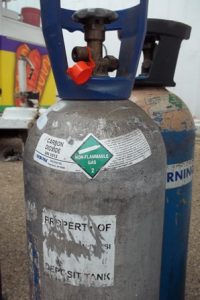In a series of publications the U.S. Department of Transportation (USDOT) seeks to inform the public of its different responsibilities managed under its various bureaus and administrations. This article refers to a particular issue of that series focusing solely on the Pipeline and Hazardous Materials Safety Administration (PHMSA).
Before we begin…
Created under the Norman Y. Mineta Research and Special Programs Improvement Act (P.L. 108-426) of 2004, PHMSA develops and enforces regulations for the safe, reliable, and environmentally sound operation of the nation’s 2.6 million-mile pipeline transportation system, and the nearly 1 million daily shipments of hazardous materials (HAZMAT) that travel by land, sea and air within the United States.
- Safety is the priority.
Everything PHMSA does ultimately serves the purpose of promoting and improving safety; safety is why PHMSA exists.
- Regulations are important in ensuring safety.
To minimize threats to life, property or the environment due to hazardous materials-related incidents, PHMSA develops regulations and standards for the classifying, handling and packaging of all hazardous materials (HAZMAT) shipments within the U.S., and the transportation of critical energy sources via our nation’s pipeline infrastructure. Click here to read more about HAZMAT and pipeline regulations. - PHMSA monitors what’s happening with pipelines.
The administration provides raw data, yearly summaries, multi-year trends of safety performance metrics, and inventories tracking the removal of aging pipeline infrastructure. Click here for data and statistics on all pipelines under PHMSA’s jurisdiction. - PHMSA Monitors what’s happening with hazardous materials transportation.
The administration tracks and provides statistical information on all incitements related to the transportation of HAZMAT within the U.S. Click here for data and statistics on HAZMAT transportation incidents within the U.S.Contact me with any questions you may have about the transportation of hazardous materials by air, highway, vessel, or rail
International and Domestic
Daniels Training Services, Inc.
815.821.1550
- PHMSA works with first responders.
PHMSA’s works closely with the emergency response communities to ensure they’re fully primed to deal with any type of HAZMAT or pipeline incident. One way it does so is producing critical training and reference materials. Click here to access one example of this, the Emergency Response Guidebook. - PHMSA promotes and supports research.
The agency sponsors projects focused on providing near-term solutions that will improve pipeline and HAZMAT safety. Click here for more information on research and development. - PHMSA partners with states.
The Office of Hazardous Materials Safety and the Office of Pipeline Safety each award about 70 grants every year to state agencies and Native American tribes through various grant programs.Click here to learn more about hazardous materials safety grants. Click here to learn more about pipeline safety grants. - PHMSA has a regional presence.
Hazardous materials and pipeline offices are located in five regions to better serve the public. Click here to find PHMSA regional offices. - PHMSA trains those who protect the public.
The agency provides pipeline inspectors with the nation’s only specialized training for understanding and applying federal pipeline safety regulations and standards.The activities at the PHMSA Training Center, located in Oklahoma City, include in-depth classroom training and expanded outdoor/ lab areas to provide inspectors with hands-on opportunities to experience actual field scenarios. - PHMSA can help members of the public find pipelines in their communities.
The National Pipeline Mapping System’s (NPMS) Public Map Viewerincludes interactive maps showing the locations of hazardous liquid and gas transmission pipelines, and Liquefied Natural Gas (LNG) plants nationwide. Interested individuals also can access information about related pipeline incidents going back to 2002.
Did you learn something? Not mentioned here is the requirement for HazMat Employers to provide initial and triennial training for their HazMat Employees (Read: What is HazMat Employee Training?)

